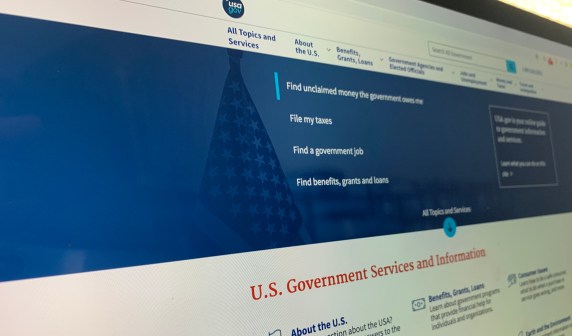Data.gov is offline because of the shutdown

Data.gov, the federal government’s central catalog for open data sets, is the latest casualty of the ongoing government shutdown.
Visitors to the site are now met with a simple error message: “Due to a lapse in government funding all data.gov websites will be unavailable until further notice,” it reads. “Updates regarding government operating status and resumption of normal operations can be found at USA.gov.” Per the Wayback Machine, data.gov appears to have gone offline sometime after 9 a.m. on Jan. 9.
USA.gov, meanwhile, is available but not being updated.
The data.gov website, which is managed by the General Services Administration’s Technology Transformation Service, doesn’t technically host data but plays an important role in the open data ecosystem nonetheless.
“Data.gov does not host data directly, but rather aggregates metadata about open data resources in one centralized location,” the website’s about page reads. Users can use the site to find over 300,000 data sets, mostly federal. The site then directs the user to an agency-hosted page where the actual data set can be downloaded. Recently highlighted data sets include food recall data, Coast Guard Marine casualty data and more.
“As data.gov is not a static site, it requires staff monitoring and maintenance to be online,” a GSA spokesperson told FedScoop in a statement. “Because personnel that monitor and maintain the site are currently furloughed, data.gov redirects to usa.gov. The decision to take data.gov offline is consistent with previous funding lapse practices.”
So what is the impact of data.gov’s disappearance on federal open data users?
For open government advocate Alex Howard, the answer to this question depends on which data sets you’re talking about. Because data sets on data.gov are actually hosted elsewhere, it is often the case that users have access to the data they need regardless of data.gov’s status. Other open data advocates have made the same point on Twitter in recent days.
The Office of Management and Budget gives agency CIOs a lot of discretion over what digital elements stay up and which come down in the event of a government shutdown, Howard said. So the landscape of what data is still easily available is a fragmented one. For example, the Center for Disease Control’s open data site is active and data can be downloaded. The U.S. Department of Agriculture also has its own data catalog. Census Bureau data pages, meanwhile, all note that they are not being updated during the shutdown. Existing data sets seem to be available.
Even where data sets aren’t available from an agency, Howard and others point out, they may still be accessible at another source. Of course, the shutdown’s impacts on government open data could grow over time if new data isn’t collected or existing data sets aren’t updated. This, Howard argues, is where the broader potential for impact lies.
But, for the time being, does it really matter if data.gov is down as long as users can still download the data elsewhere?
Zoë Wilkinson Saldaña, a data librarian at Cornell University, says yes. She told FedScoop that she often uses data.gov to introduce social science students to the concept of a data portal. “We’re at a point right now where the open data landscape is extremely confusing,” she said, adding that data.gov helps people learn about the jurisdiction of federal agencies and where they can find data that they’re interested in.
“Like, I know that NOAA has great climate data and they have some APIs… but you have to have domain knowledge to kind of get there,” she said. For students especially, data.gov bridges the gap.
“Data.gov is really important,” she said.






